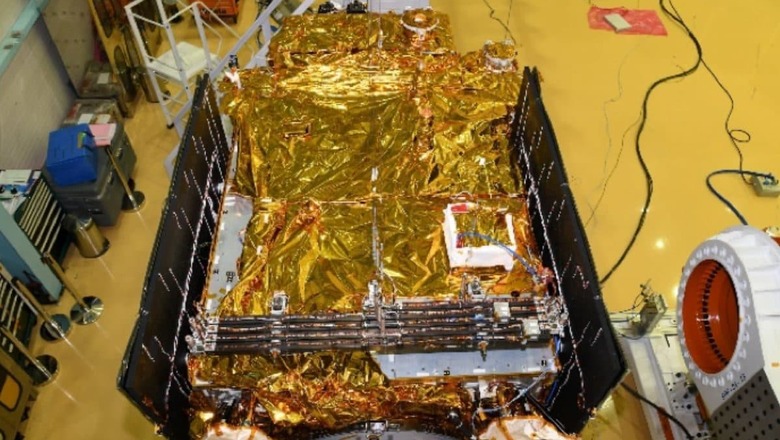
views
Indian Space Research Organisation (ISRO) has successfully deployed the magnetometer boom on board the Aditya-L1 satellite to measure the low-intensity interplanetary magnetic field in space.
The six-metre-long magnetometer boom was deployed in the Halo orbit at the Lagrange point L-1, on January 11, said the space agency, adding that the boom had been in stowed condition for 132 days since the Aditya-L1 launch.
According to ISRO, the boom carries two state-of-the-art, high-accuracy fluxgate magnetometer sensors that measure the low intensity interplanetary magnetic field in space.
Aditya-L1 Mission:The 6m magnetometer boom, previously stowed for 132 days, is now successfully deployed in the Halo orbit.The boom houses two fluxgate magnetometers that measure the interplanetary magnetic field in space.
Details: https://t.co/ZrSKAVu1z4 pic.twitter.com/Xq4LmwBhwE
— ISRO (@isro) January 25, 2024
“The sensors are deployed at distances of 3 and 6 metres from the spacecraft body. Mounting them at these distances minimises the impact of the spacecraft generated magnetic field on measurements, and using two of them assists precise estimation of this influence. The dual sensor system facilitates cancelling out the spacecraft’s magnetic influence,” it said.
The boom segments are constructed from carbon fibre reinforced polymer and serve as interfaces for the sensor mounting and mechanism elements, ISRO said.
The articulated boom mechanism comprises five segments interconnected through spring-driven hinge mechanisms, allowing for folding and deploying actions, it was noted.
India’s maiden solar mission Aditya-L1 reached the L1 point, located roughly 1.5 million km from earth enabling the spacecraft to view the sun continuously, on January six, 127 days after it was launched on September 2, 2023.
The solar observatory at L1 is aimed at Observing and understanding the chromospheric and coronal dynamics of the Sun in a continuous manner.
Meanwhile, on the Republic Day, a special tableau of ISRO remained one of the highlights of the parade. The tableau captured the landing of the Chandrayaan-3 spacecraft near the south pole of the Moon and the Aditya L-1 mission.
The tableau also showcased the participation of women scientists in various missions of the ISRO, which is now planning to carry out India’s maiden human space flight next year.
The tableau had a model of the Launch Vehicle Mark-3 that took Chandrayaan-3 to the Moon from Sriharikota. The lunar landing site of the spacecraft which was named Shiv Shakti Point by Prime Minister Narendra Modi was also featured.
The tableau illustrated the successful Aditya L-1 mission to study the Sun as well as future missions such as Gaganyaan and Bhartiya Antariksh Station among others.
(with PTI inputs)


















Comments
0 comment